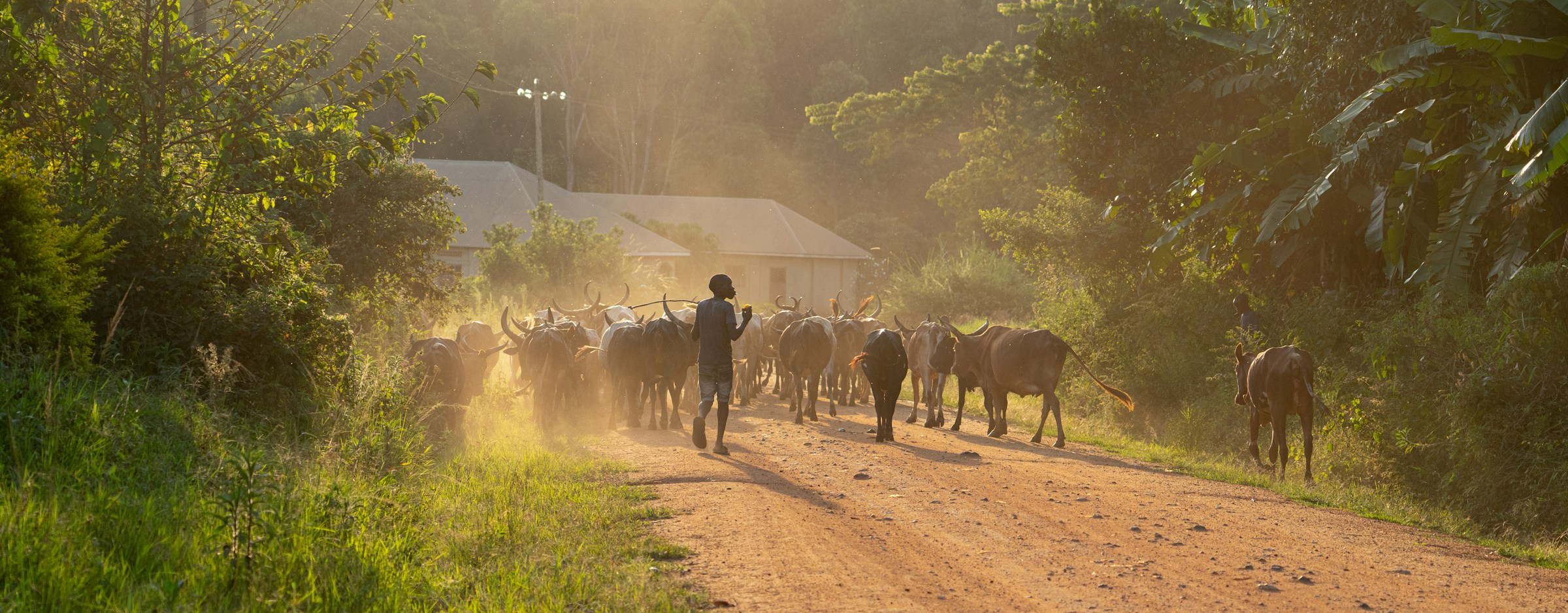
Innovations in genetic selection of cattle resistant to ticks and tick-borne diseases
The global cattle industry faces a significant challenge: ticks and tick-borne diseases. These diseases, transmitted by parasitic ticks, cause immense economic losses and threaten animal health. However, researchers are pioneering innovative genomic selection techniques that offer promising solutions for the future of cattle breeding.
Tick-borne threat
Ticks are blood-feeding parasites that not only irritate cattle but also transmit a range of debilitating diseases. These diseases, including babesiosis, theileriosis and heartwater, cause fever, anaemia, weakness, and even death in cattle. The economic impact is substantial, with lost productivity, treatment costs, and potential carcass condemnation due to disease.
Traditional control methods
Traditionally, cattle farmers rely on acaricides (chemicals that kill ticks), parasiticides and vaccination to manage tick-borne diseases. However, acaricide resistance in ticks is a growing concern, and developing effective vaccines for ticks and tick-borne diseases has proven challenging.
Host resistance is a sustainable solution which could drastically reduce the ticks and tick-borne diseases burden and the use of parasiticides. However, it is neglected due to a lower visibility of the economic return and the difficulty of identifying animals resistant to ticks and tick-borne diseases. Given that resistance to ticks is a polygenic trait, which is at least moderately heritable, an additional opportunity to improve individual animal resistance to ticks is through genetic selection.
Cattle hosts that are naturally resistant to R. microplus and other tick species have evolved through coexistence with ticks or generations of selective breeding towards higher resistance. Bos taurus breeds are more susceptible to ticks than Bos indicus, Bos javanicus and their crosses. Hence, in tick-endemic regions of the world, farmers should use livestock breeds more resistant to ticks and part of integrated programmes for tick control. Additionally, individual animals differ in their resistance to both the ticks and the diseases transmitted by the ticks and hence within- and across-breed selection is another genetic improvement opportunity.
Host resistance to ticks is moderately to highly heritable, meaning it will effectively respond to genetic selection. However, cattle tick resistance and other measures of adaptation (e.g. resistance to gastrointestinal parasites and biting insects, tolerance of high temperatures and humidity) are genetically unrelated to productive traits such as growth or reproductive performance that might otherwise have been able to be used to indirectly select for host tick resistance. This means that to genetically improve adaptive traits it is necessary to directly measure host resistance to the stressors and that is currently a major impediment to genetic improvement programmes.
Genetic improvement programs need to consider productive traits such as growth or reproductive performance and adaptative traits such as resistance to ectoparasites and diseases transmitted. However, cattle tick resistance is often genetically negatively correlated with productive traits. The main limitation on selection for high host resistance against ticks is the need to measure the tick resistance phenotype, which is labour-intensive and strongly affected by temporal and spatial factors.
Extending the benefits of genomic selection to livestock in low-middle income countries through use of reference populations and cross-country collaborations represents a potential for significant impacts on the productivity, adaptation and profitability of livestock farmers’ herds and flocks, whilst simultaneously addressing the need for improved climate resilience and mitigation.
Current research focuses on using innovative genetic selection techniques to develop cattle breeds resistant to ticks and tick-borne diseases. Two promising avenues are being explored:
Identifying tick resistance genes: By studying cattle populations that demonstrate natural resistance to ticks, researchers can identify the genes responsible for this resistance. This involves analyzing the genomes of tick-resistant cattle breeds and pinpointing genetic variations associated with resistance.
Selective breeding for tick resistance: Once tick resistance genes are identified, breeders can use selective breeding programmes to favour these genes in future generations. This can involve using advanced techniques like genomic selection, which utilizes DNA markers to predict an animal's genetic potential for tick resistance in conjunction with measures of animal performance.

Benefits of host resistance
Developing cattle breeds resistant to ticks offers several advantages:
- Reduced reliance on acaricides: By minimizing the need for acaricides, this approach can help combat acaricide resistance in tick populations.
- Improved animal welfare: Reduced tick burdens on cattle lead to improved animal health and well-being.
- Sustainable tick and TBD control: Genetic resistance offers a long-term, sustainable solution compared to the limitations of acaricides and vaccines.
Challenges and future directions
While promising, research is still in its initial stages. Challenges include:
- Identifying resistance genes: Tick resistance is likely a complex trait influenced by multiple genes. Extensive research is needed to identify all relevant genes.
- Breed specificity: Resistance genes may vary between cattle breeds, requiring tailored breeding programmes for different breeds.
- Identifying practical and cost-effective methods: Identifying cattle that are resistant to ticks and which could be used for both genetic improvement and cattle management purposes
- Long-term selection programmes: Developing genetically resistant breeds takes time and requires sustained collaboration and commitment from breeders.
Find out more

Community of Practice on Acaricide Resistance management of livestock ticks
The Community of Practice is an inclusive, international and multi-stakeholder community that brings people together from across sectors and disciplines to address challenges, options and possible pathways for the sustainable management of ticks in livestock and acaricide resistance.

Ticks and acaricide resistance: A ticking time bomb for livestock
The increasing occurrence of acaricide resistance, where ticks develop abilities to survive despite the chemicals used to control them, has become a major concern for farmers, veterinarians, and public health officials worldwide.
